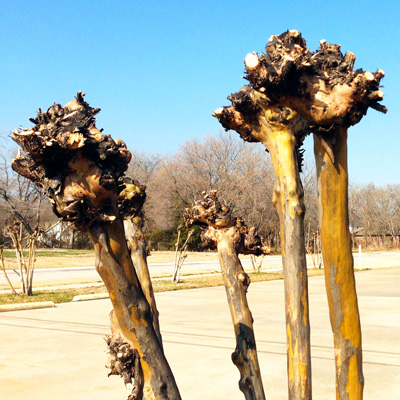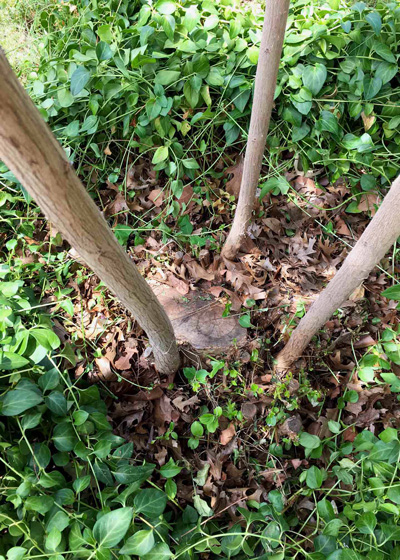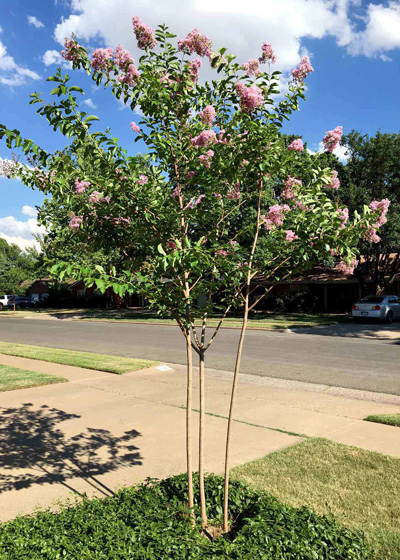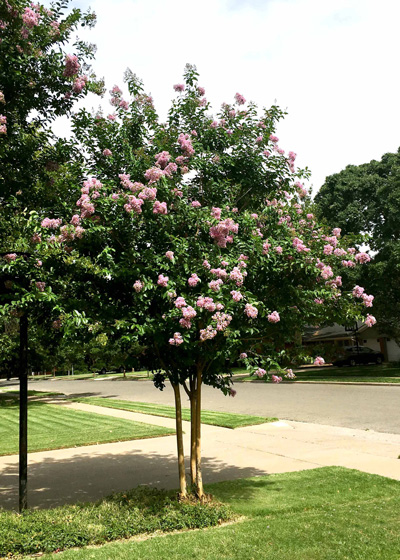A Question I’ve Never Been Asked
I’ve been doing my Q&A radio talk shows since 1978. I keep a log of each caller, the city and topic, so I have a good idea of how many calls I have taken. I’m up to 450,000 questions and the list is still growing.
Some questions come up time after time. But I was thinking this past weekend about important questions I almost never get asked. I’m going to address one of them here today. I’ll save the other for next week right here again.

Question: “How can I salvage a butchered crape myrtle that the previous homeowner mercilessly topped?”
Answer: Bless you for caring! Actually, I do get this question once or twice a year now that I’m talking openly about it. The amazing thing about crape myrtles is their great sense of permanence.

You can cut one completely to the ground to eliminate all the ugly, gnarled stubs on the trunks. It will come back! At 65 miles per hour!
Where you remove a trunk flush with the soil, you’ll get 15 or 20 new shoots coming up from its roots within weeks. They’ll grow very rapidly, because they have that large root system to pull in nutrients and water and to push them up into the top of the plant.
Let the sprouts all grow for a few months. As they begin to get a little bit woody, you can start to thin out the herd. Remove all but 8-10 of the strongest canes. Let those grow for the rest of the year.

The following spring, choose the 3 or 5 stems (odd numbers are visually restful) that appear to be most likely to regrow into a beautiful tree. Remove all the rest. Stand back and prepare to be amazed at how quickly you’ll have a handsome tall flowering tree once again – free from all the gnarls and knobs.

